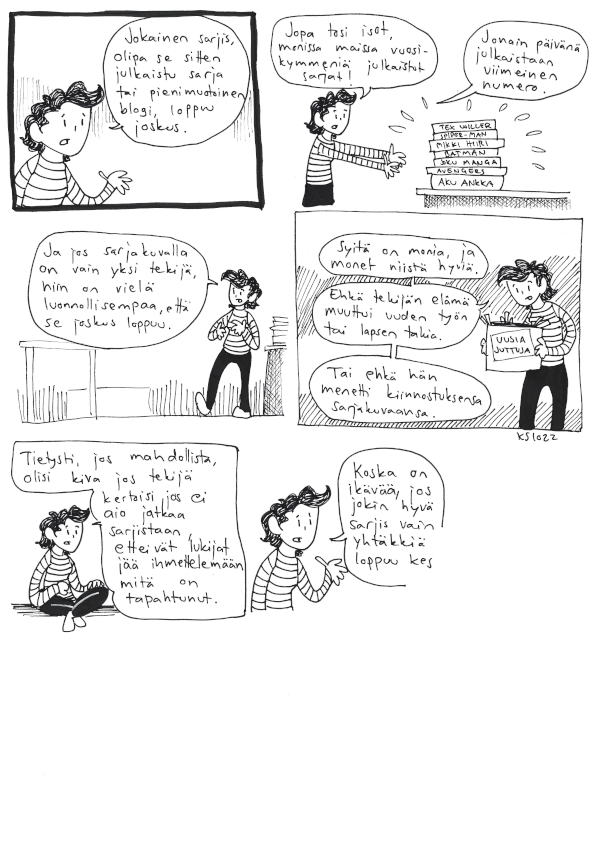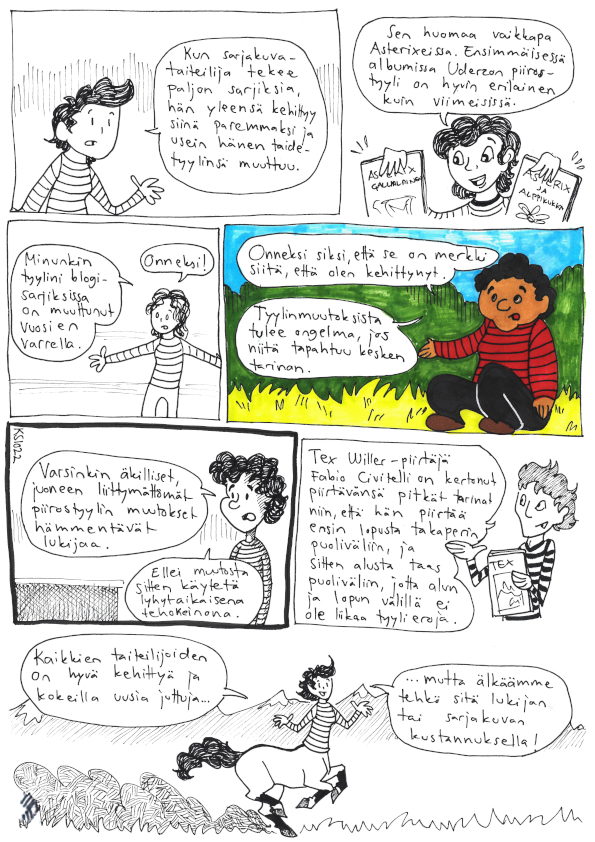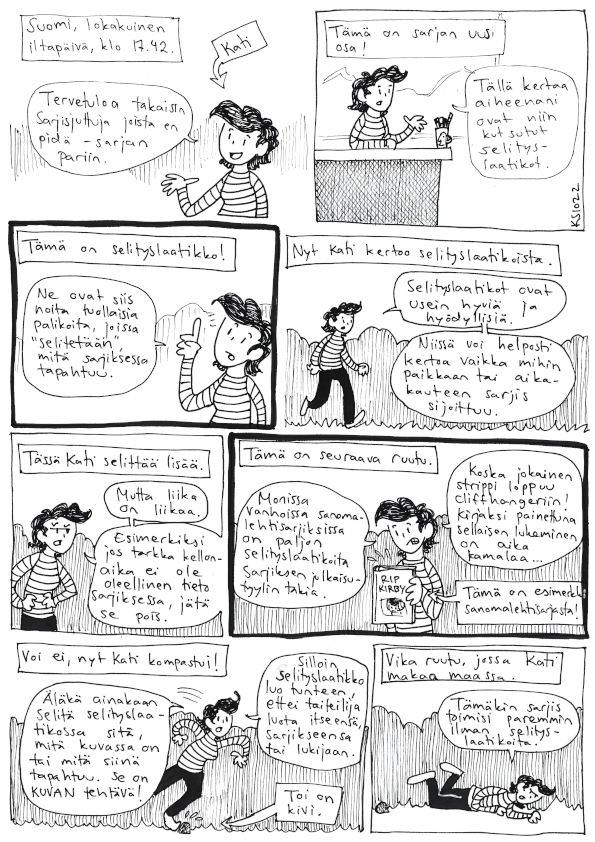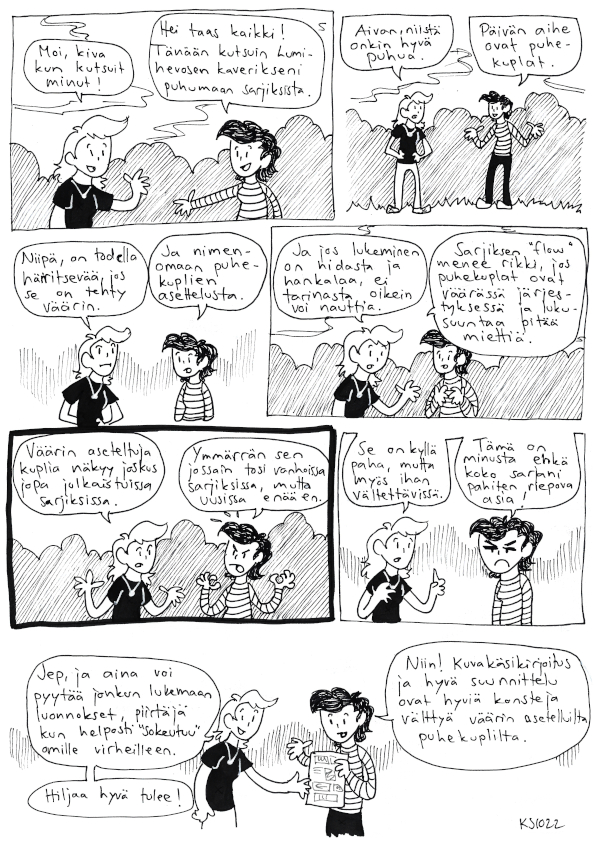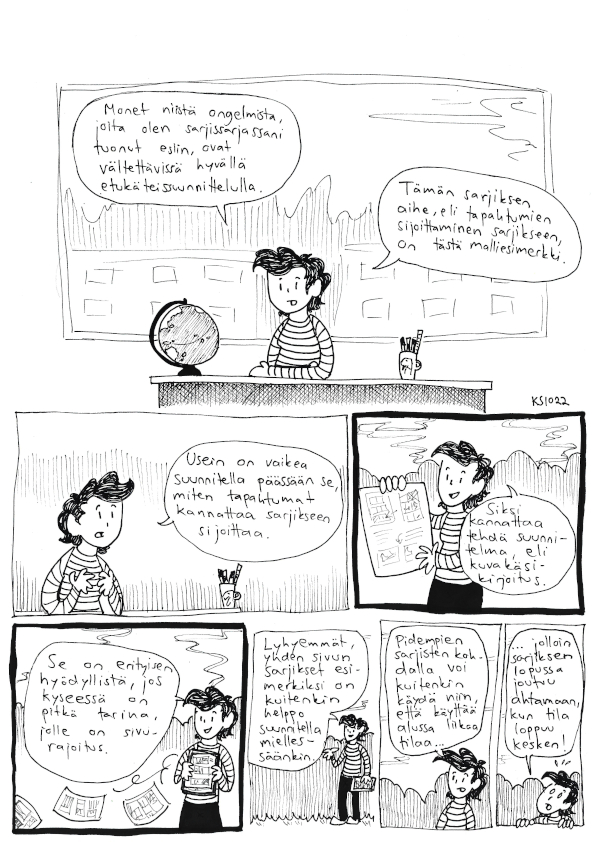CTID: !
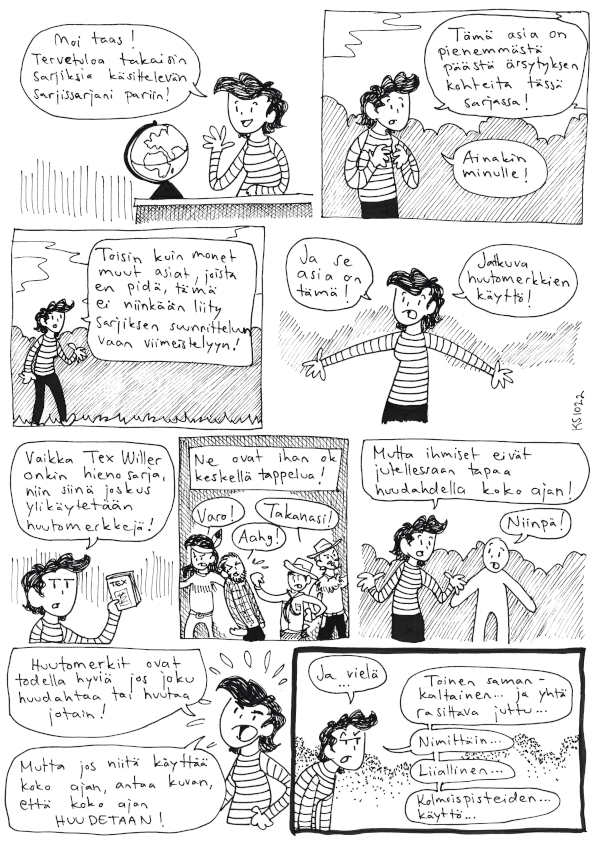
”Hello again! Welcome back to my comic series about comics!” //
”This one is one of the no-so-annoying ones in this series! At least to me!” //
”Unlike many of the other topics, this one doesn’t have that much to do with the planning but more with the finishing!” //
”And this is the thing! Constant usage of exclamation points!”
”Even though Tex Willer is a great comic it sometimes overuses exclamation points!” //
They are all right in a fight scene! ”Look out!” ”Aagh!” ”Behind you!” //
”But people don’t tent to exclaim constantly when they’re talking!” ”Indeed!” //
”Exclamation marks are really useful if someone is actually exclaiming or shouting something! But if they’re used all the time it just looks that everyone is constantly YELLING!” //
”And now… Another pretty similar… and equally annoying thing… Which is… Constantly… overusing… ellipses…”
Huomasin sittemmin, että ”…” on ”pistekolmikko” tai ”ellipsi”. Kolmoispiste taas liittyy fysiikkaan ja on se lämpötilan ja paineen suhteen ”optimaalinen” kohta, jossa aineen kolme olomuotoa eli kaasu, neste ja kiinteä, ovat tasapainossa. En tajunnut tätä tussatessani.


